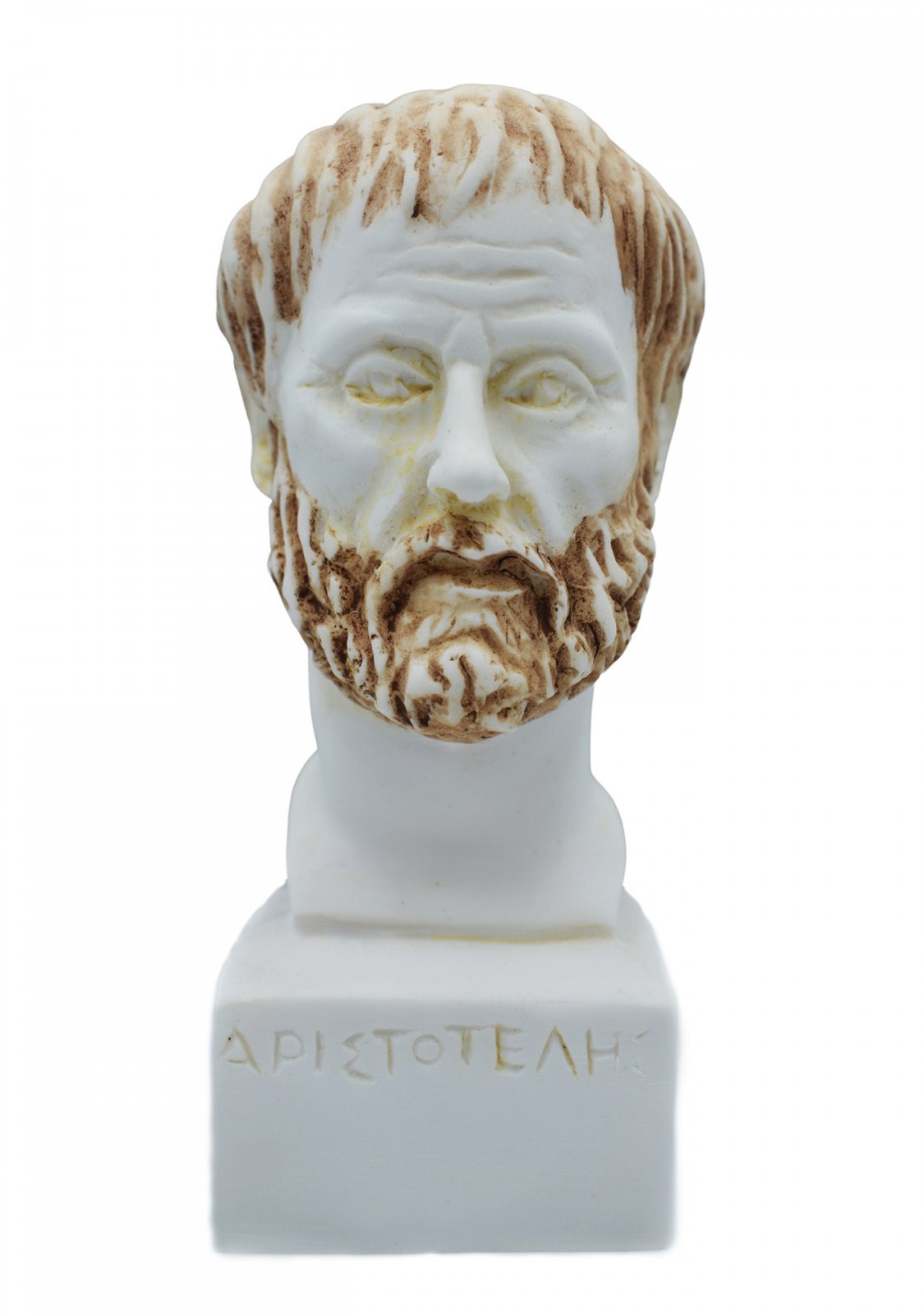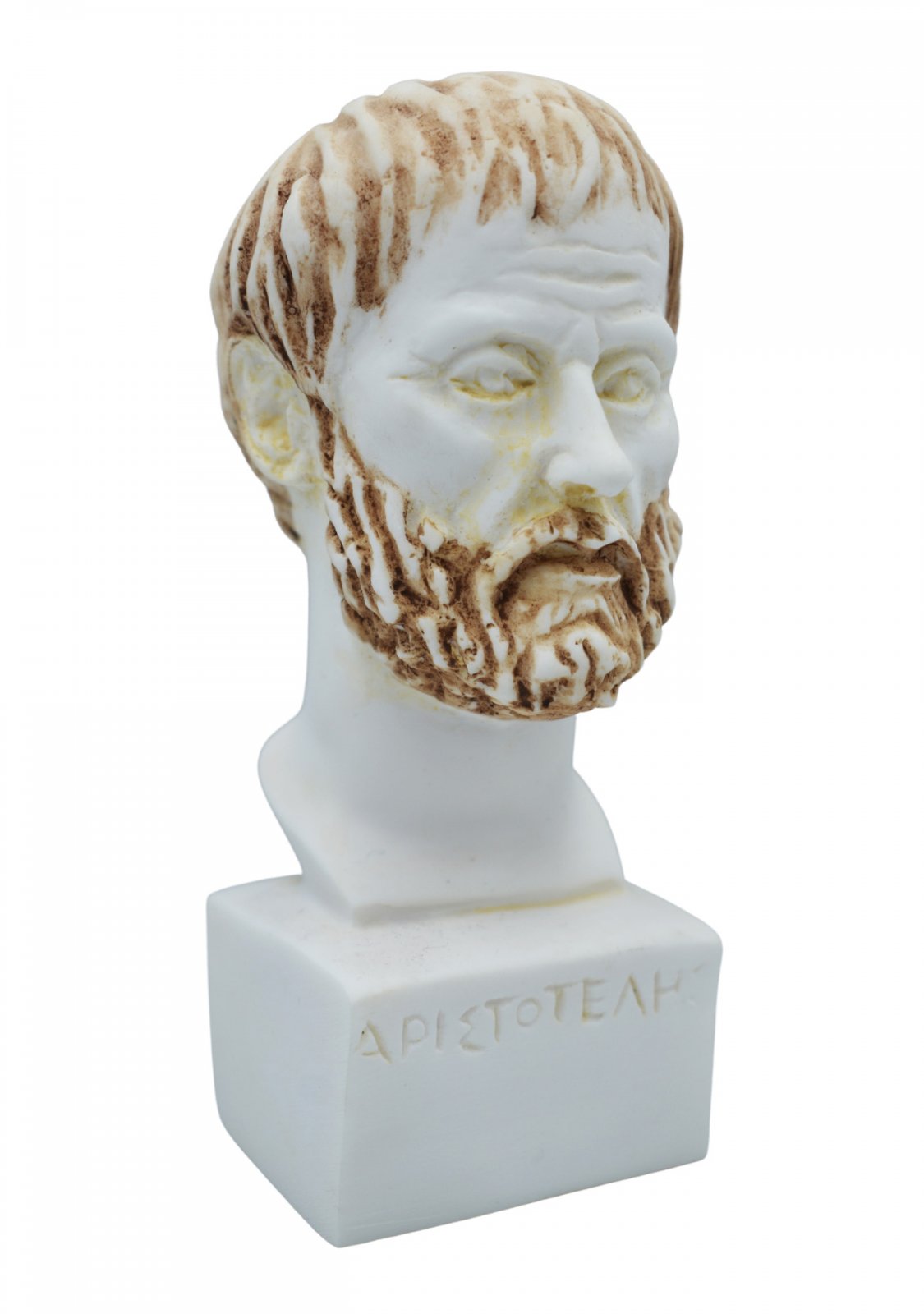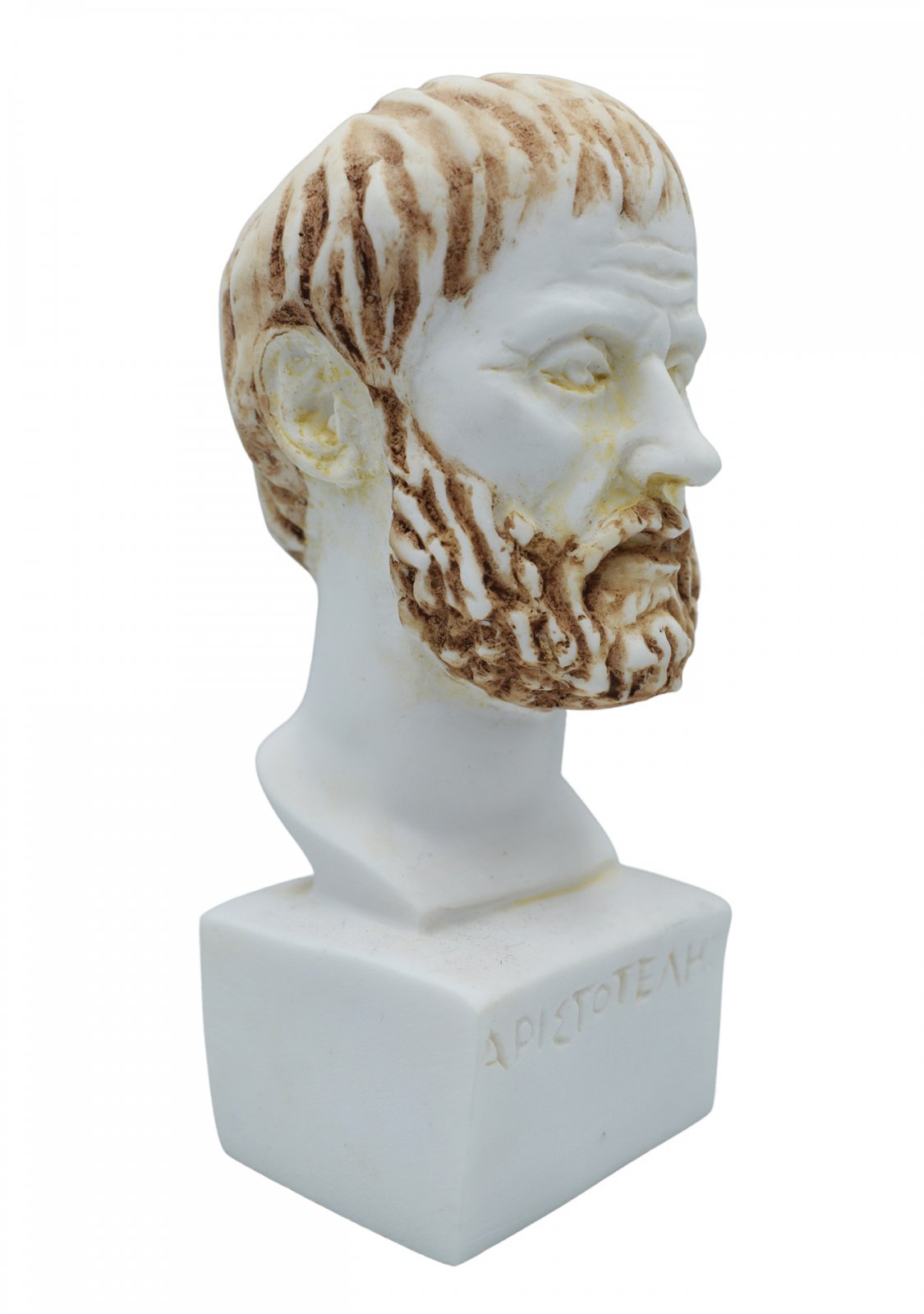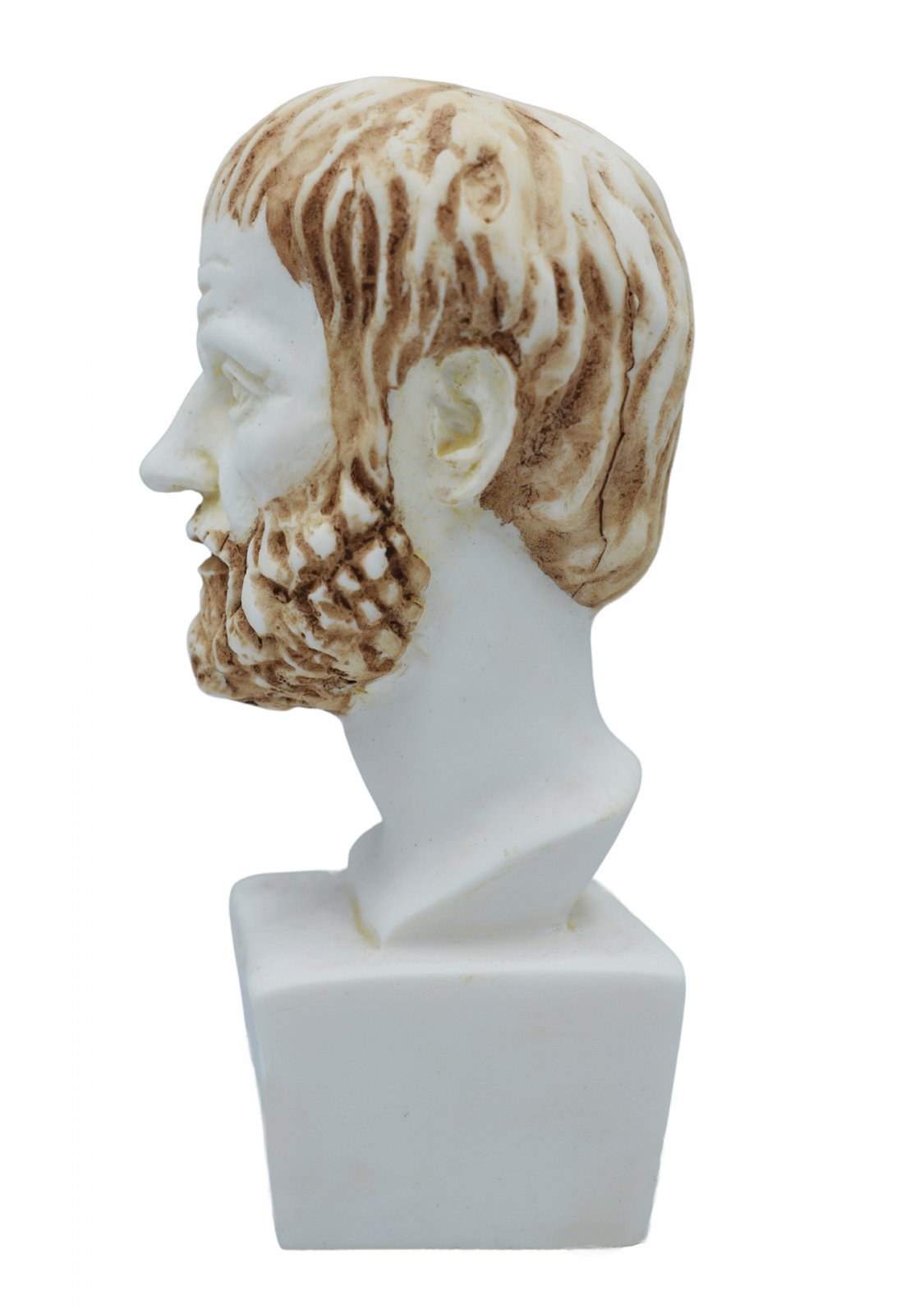Aristotle greek alabaster bust statue
Handmade greek alabaster statue of Aristotle, the greek philosopher and scientist.




Handmade greek alabaster bust of Aristotle, the greek philosopher and scientist. An ideal souvenir from Greece!
Aristotle (384–322 BC) was a Greek philosopher and polymath during the Classical period in Ancient Greece. Taught by Plato, he was the founder of the Lyceum, the Peripatetic school of philosophy, and the Aristotelian tradition. His writings cover many subjects including physics, biology, zoology, metaphysics, logic, ethics, aesthetics, poetry, theatre, music, rhetoric, psychology, linguistics, economics, politics, meteorology, geology and government. Aristotle provided a complex synthesis of the various philosophies existing prior to him. It was above all from his teachings that the West inherited its intellectual lexicon, as well as problems and methods of inquiry. As a result, his philosophy has exerted a unique influence on almost every form of knowledge in the West and it continues to be a subject of contemporary philosophical discussion.
Aristotle was born in the city of Stagira in Northern Greece. At seventeen or eighteen years of age he joined Plato's Academy in Athens and remained there until the age of thirty-seven (c. 347 BC). Shortly after Plato died, Aristotle left Athens and, at the request of Philip II of Macedon, tutored Alexander the Great beginning in 343 BC. He established a library in the Lyceum which helped him to produce many of his hundreds of books on papyrus scrolls. Though Aristotle wrote many elegant treatises and dialogues for publication, only around a third of his original output has survived, none of it intended for publication.
In ancient Greece many of the statues and architectural sculpture were colourfully painted in a way that is described as ''polychrome'' (deriving from the Greek words many and colour)? However, due to intensive weathering and other effects on the stone, the ''polychromy'' on Ancient Greek sculpture and architecture has substantially or totally faded, leading the scientists for centuries to believe that the statues were originally totally white.
★ Please notice that any differences of colour, form and painting between the images and the products received are due to the fact that the items are 100% handmade.
Dimensions
6 x 13.5 x 6 centimeters
2.36 x 5.31 x 2.36 inches
Material
Alabaster
Color
White - Brown
€15.00

